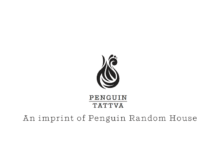
Established in 1974, Kottayam-based DC Books celebrated its golden jubilee anniversary this year. Founded by literary figure and social activist, Dominic Chacko Kizhakemuri 50 years ago, the publishing house that goes by his initials has always put authors first – even when in the initial days it had to subsidize the high royalties it paid. DC Kizhakemuri established a Sahitya Pravarthaka Cooperative Society (SPCS) and paid 30% royalty to the writers which was cross subsidised with copyrighted reference books.
DC Kizhakemuri is known as the Father of the paperback revolution in India where he published 10,000 copies of Thakazhi’s Chemmeen in 1951 which became the first ever book to sell in huge numbers in India. Today, while Ravi Deecee, CEO of DC Books, has been with the organization for the last 32 years, Govind Deecee, editorial director at DC Books, joined the publishing house eight years ago. Ravi joined DC Books in 1991 and has been in charge from 1997-98.
DC Books has a complete editorial process and production ecosystem known for its outspoken authors and its unique and avant-garde production. DC Books, which publishes nearly 400 titles each year, is among the top names in Malayalam, be it in terms of the number of books being published or the number of copies sold, Ravi Deecee said in an interaction with Indian Printer and Publisher. As of June 2024, DC Books was the number one in the bestseller category for 17 weeks in a row, per data published by the Nielsen BookScan. It is among the top 10 book publishers from India along with Penguin and HarperCollins India.
DC Books has published more than 8,000 titles. The publisher has its own printing facility. “We are in a way, a microcosm of publishing – once we take a book, we can do the editing, layout design, send the book to press, distribute it, put it in shops, and use our online presence to promote it as well,” Govind Deecee said.
The publisher has been doing a lot of copies on POD form or reprints of 100 or 300 copies. It has 500 books that go into reprints of 5,000 to 10,000 copies each. DC Books decided to go for its POD machine for this purpose. “We bought a monochrome digital press for book printing as well as a 4-color sheetfed offset press for cover printing,” Ravi Deecee said.
DC Books has gone for Fogra standardization and certification at drupa24 and perhaps became the first Indian book publisher to do so. “We are looking at prepress and postpress that may also come in handy for these short-run and book-on-demand operations,” Ravi Deecee said.
Indian publishing industry
Ravi feels the publishing industry has gone through various stages. When he joined, it was more focused on fiction. “India has grown as a huge publishing nation with new books being published in emerging genres. English publishing has taken over the Indian publishing scene with Bengali, Malayalam and Marathi in second, third and fourth places. Hindi publishing is yet to be at that level. Supplementary reading in schools should be compulsory to develop a strong reading culture just as in Europe and the US. It will make us more knowledge-and creativity-based people,” Ravi Deecee said.
DC Books has the largest translation program into any Indian languages in India.

Audiobooks are another area the Indian publishing industry needs to explore, Ravi Deecee said, adding DC Books had done about 18,000 hours of audiobooks in Malayalam. “People can listen to the books and come back for reading,” he said.
Reader feedback is significant and DC Books always goes back to readers and recommends new books to them. “Until and unless you make people aware of what is happening in the literary scene, you won’t be able to succeed in any of your book publishing projects.” The DC Books editorial team consists of 15 well-read people who visit bookstores, book fairs, exhibitions, and literary events to stay abreast of the latest trends. “Literary agents and writers also share their feedback to help us improve our publishing game.”
Bookselling & bookshops
DC Books has 42 shops in Kerala – which includes airports (Kozhikode, Kochi and Thiruvananthapuram), high streets, malls and small towns, apart from the regular bookshops – and two in the Middle east which are operated as a successful franchisee model which they intend to spread across the Middle East and elsewhere where there is a significant presence of Indian Diaspora, said Siddarth Deecee Director- Marketing & Sales.
“We are not present in too many malls as we feel visitors, especially in Kerala, tend to window-shop books in malls rather than purchase them. We are in Bahrain and are trying to explore Muscat,” Govind shared.
In the Middle East, DC Books operates in an entirely different mechanism. “We run smaller book fairs every month in different locations and actively work with schools, institutions, and associations, he said.
DC Books is one of the key consultants and organizers of the Sharjah Book Fair, he said. “We have been able to take a lot of internationally acclaimed authors to the Sharjah Book Fair. We also have a huge component of readers from the Indian community, which largely comprises Malayalam readers, he said.

Online sales are gaining traction but it does not necessarily serve all types of books and readers, Govind said, adding bestsellers tend to do well online but not for a debutant writer. “Online websites work on algorithms and feature popular names but it doesn’t necessarily work with every bookseller and every publisher. If you are a social media influencer with a massive following, you can get traffic to your Amazon link and make sales happen. Websites such as Amazon and Flipkart are just helping you quickly make a purchase.”
According to Govind, physical bookshops encourage browsing if curated well. “If you are a credible bookshop owner who can suggest authentically about books, I think readers like to have that conversation to figure out which book to read next. That sort of curation helps readers to discover new books and authors. I don’t think online performs that function.”
Govind, however, doesn’t feel physical bookshops will go away completely. “Urban centers will have a certain tendency of convenience, where readers will buy the books they want online simply because someone has marketed it to them. Not all books get that privilege. You still need a physical bookshop because some readers have a different way of discovering books. I think we will settle on a bit of hybrid mode with online having an upper hand,” he said.
Discovering books in the new normal
Data from English booksellers suggest nonfiction or self-help is selling more whereas, in Malayalam, fiction and imaginative works still have an upper hand, with short stories having had a great year, he said. Social media has improved exposure and influences how books are reviewed. “That was an era where there was a literary breakdown of a book. That process is now on the decline while social media in the form of Instagram reels and posts does a better job of pushing books. Bookstagram posts and reels are not the equivalent of printed reviews. However, there is an emotional component of suggesting books that reels and posts have unlocked.”
Govind said that shift is strong even in Malayalam. Europe and the US have book talks, where TikTok is now a major platform pushing book sales. Similar trends are picking up in India. In Malayalam, influencers talk about books, and review and suggest books.
“If not sales, social media does create awareness about books, which in a traditional brick and mortar shop is almost impossible. If I showed you a bookshelf lined with books, you would only retain five titles in your mind. There is a bombardment of information on social media where you see a few books at a time and recall what the cover looks like. It stays in your head for some time – that has been one of the key aspects of social media and online promotion,” he shared.
Govind says DC Books is fairly strong on Facebook and Instagram and has an online bookshop. “We have done a neat job in creating an engaging audience – we have a strong set of young followers on our Instagram page. It tells us a little bit about what sort of books we ought to consider given the demographic of people that look up to us,” he said. “We are as much digital as we are physical in terms of bookselling.”
Translated works
In translations, DC Books has had a good streak in the past couple of years. The first JCB prize for literature was awarded to a Malayalam author (Benyamin for Jasmine Days in 2018). Interestingly, of the six years of the award, Malayalam has won three and has always had a book on the shortlist. We have to be thankful to great translators who created that threshold in terms of quality as to what Malayalam books are, he said. “Good translators matter a lot, whether it’s Jayasree Kalathil or Shahnaz Habib or Fathima EV or Nandakumar K, who translated the Malayalam books that won awards,” Govind shared.
Kerala has always been an open-minded community of readers who consider some internationally acclaimed authors as native Kerala writers. “Gabriel Garcia Marquez, for example, is as much a Malayalee as he is a Columbian, Orhan Pamuk is celebrated in Kerala.”
DC Books has an active program that does nearly 35 or 40 books a year with translations from Indian and international languages.
In 2020, during the pandemic, they translated Standing Heavy (originally published in French) by French author Gauz into Malayalam even before the English translation came out. In 2023, the book was on the shortlist for the International Booker Prize. “In 2020, nobody could predict the book would be on the shortlist. We picked it up thinking this is an interesting concept where readers might find some resonance – as long as I have that security in my head, I am willing to experiment whether I sell 1,000 copies or 5,000 or 10,000,” he said.
More books being translated is good because we will have certain myopia if we only consume books that are by us, he said. “Translations are a key component of our publishing program. We will actively look for more titles and sales to match our expectations. We have translated books from German and French and looking at Icelandic to be translated into Malayalam. We have been actively doing translations from Tamil, Marathi, Hindi, Bengali, and Kannada,” Govind added.
Stages of publishing a book
The DC Books editorial team meets every Thursday. Some of its editors, he said, are well-experienced to understand what authors are capable of doing. “Being in touch with them helps us to suggest some book ideas to them,” Govind DeeCee shared, adding this exercise helps us create books rather than waiting for authors to write.
The editorial intervention, he said, is necessary because sometimes the writing may be good but the plot may be inconsistent. In non-fiction books, the research may be good but it might not read well. “So all sorts of restructuring happens while shaping books before they go for the final edit, he said.
For design, there is a certain convention it follows because there is a certain familiarity that people have to feel while reading, Govind Deecee said, adding if you massively change layouts and mess with fonts, it may not render well.

















